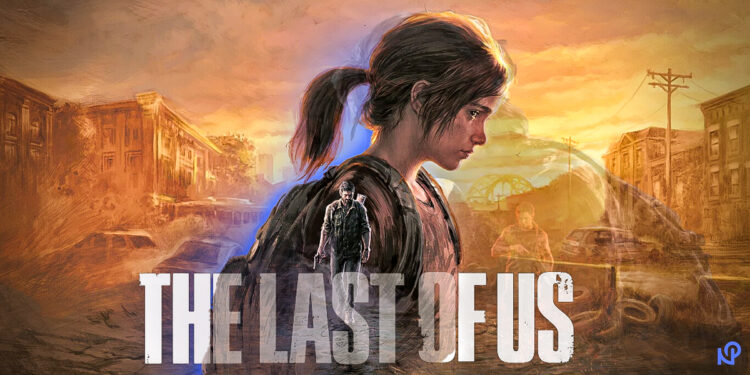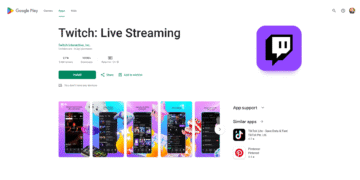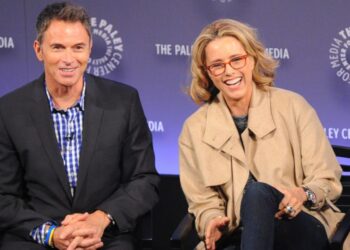Season 2 of The Last of Us returns to a world still grieving, still fighting, and still searching for meaning. It follows the thunderclap ending of Season 1 and asks what survival truly costs once the gunfire fades.
This isn’t a simple continuation. It’s a sharper, riskier chapter that turns inward toward grief, consequence, and the uneasy space between justice and revenge.
If you’re catching up, this guide walks you through the essentials with clear sections and short, readable paragraphs.
Premise
Five years have passed since Joel and Ellie found shelter in Jackson, Wyoming. Their days are quieter now work details, shared meals, a sense of community.
That calm fractures after a brutal event pulls Ellie back onto the road. What follows is a personal quest through hostile territory where the most dangerous enemies are often human.
Season 2 adapts major arcs from The Last of Us Part II, but it reshapes the material for television, prioritizing character perspective and emotional stakes.
Release & Format
The season premiered on HBO and Max on April 13, 2025. It runs for seven tightly edited episodes.
The shorter count concentrates the storytelling. Episodes land like chapters focused, purposeful, and designed to linger.
Showrunners Craig Mazin and Neil Druckmann have said the sequel game’s story will span multiple seasons, giving the adaptation room to breathe.
Cast
Pedro Pascal returns as Joel, a man defined by love, fear, and the consequences of one impossible choice. His performance is quieter this year heavy with unspoken regret.
Bella Ramsey’s Ellie has matured. The sweetness we met on the road is still there, but it’s buried beneath a resolve that sometimes curdles into fury.
New faces matter. Isabela Merced’s Dina brings warmth, humor, and a stubborn hopefulness that Ellie desperately needs. Young Mazino’s Jesse is steady and clear‑eyed.
Kaitlyn Dever’s Abby arrives like a fault line. Her presence reframes what we think we know and forces the story to confront the other side of pain.
Story
The season opens on routine fences to mend, patrols to run, small town rituals that make the end of the world feel almost livable.
Then everything tilts. Ellie and Dina leave Jackson chasing answers, accountability, and a sense of control that grief has stolen.
Seattle becomes the crucible. It’s a city of factions and unfinished wars, where alliances mean little and survival often requires terrible bargains.
Infected encounters are leaner but more surgical. The show reserves them for moments when fear needs a physical shape. The deeper horror is moral: what we do to each other when pain needs an outlet.
Craft
Season 2 is beautiful in a bruised way. Overgrown boulevards, flooded tunnels, and quiet interiors tell their own story of time and reclamation.
The camera often sits with faces. Silence does heavy lifting. A glance, a grip, a breath these are the beats that land.
Gustavo Santaolalla’s score returns with restrained, aching motifs. The music doesn’t explain; it underlines the ache that words can’t carry.
Direction and editing lean on patience. Scenes are allowed to stretch, then snap mirroring how grief moves in waves.
Themes
Revenge is the headline, but consequence is the body text. The season keeps asking who pays and how long the bill keeps coming due.
Ellie’s drive makes sense emotionally and still feels frightening. The show respects that contradiction.
Dina is the counterweight. She embodies the possibility of a life that isn’t only about what was taken. Her steadiness gives the story a heartbeat.
Abby’s arc challenges the comfort of a single perspective. When the story widens, empathy follows even when it’s uncomfortable.
Underneath it all is legacy. The choices of Season 1 echo here, shaping futures no one intended.
Differences from the Game
The broad strokes align with Part II, but the path bends. Scenes are rearranged, points of view are re‑timed, and certain relationships receive more space.
Television thrives on proximity. The show uses that closeness to deepen motives and complicate villains, reminding us that labels rarely survive scrutiny.
Not everything from the game fits into a single season. Threads are planted to grow later, which makes the seven‑episode structure feel intentional rather than abbreviated.
Performances
Pascal plays Joel like a man holding a door shut with his body. The effort shows in the slump of his shoulders and the careful way he speaks.
Ramsey’s Ellie is the engine. She burns bright, then burns out, then finds another spark. The performance curdles and softens in equal measure.
Merced gives Dina a lived‑in warmth that cuts through the grey. Mazino adds calm in a story that rarely sits still.
Dever finds the steel and the sorrow in Abby. Her scenes land with the shock of recognition: pain doesn’t belong to one side.
Reception & Discussion
Critical response has praised the ambition, the patience, and the performances. Viewers have been louder and more divided by design.
The finale’s cliffhanger kept discourse buzzing. Debates revolve around pacing, perspective shifts, and whether a story about revenge can also be a story about grace.
What’s notable is the consistency of conversation. Week to week, people aren’t just recapping what happened; they’re arguing about what it means. That’s a sign of healthy storytelling.
Cultural Footprint
Season 1 proved a game adaptation could be prestige television. Season 2 argues it can be braver, stranger, and more humane.
Accessibility efforts, textured representation, and a refusal to flatten complex characters have helped the show break past genre walls.
The series keeps nudging the medium toward quieter risks long silences, moral ambiguity, empathy for inconvenient characters. Those choices are resonating far beyond fandom spaces.
What’s Next
The story will continue. Expect Season 3 to pick up the emotional debris and widen the lens around Abby, while following Ellie through the aftershocks of her choices.
Future chapters will likely deepen the warring‑factions backdrop and explore how communities bend or break under the weight of grief and scarcity.
If Season 2 was about impact, Season 3 looks poised to be about recovery, however messy that word needs to be.
Conclusion
Season 2 is bold, bruised television. It trades easy catharsis for harder truths and trusts the audience to sit with discomfort.
The filmmaking is confident. The performances are precise. The writing refuses to apologize for the mess of being human when survival stops being the only goal.
If you’re in for character drama with teeth, this season delivers. And if you’re wrestling with it that’s the point. The show wants your arguments as much as your applause.
FAQs
When did Season 2 premiere?
It premiered on April 13, 2025, on HBO and Max.
How many episodes are there?
Seven episodes tell a tighter, more focused story.
Who joined the cast?
New faces include Isabela Merced, Young Mazino, and Kaitlyn Dever.
How is it different from the game?
The series reshapes events and expands perspectives for TV.
Will there be a Season 3?
Yes, a third season is confirmed and in early development.













